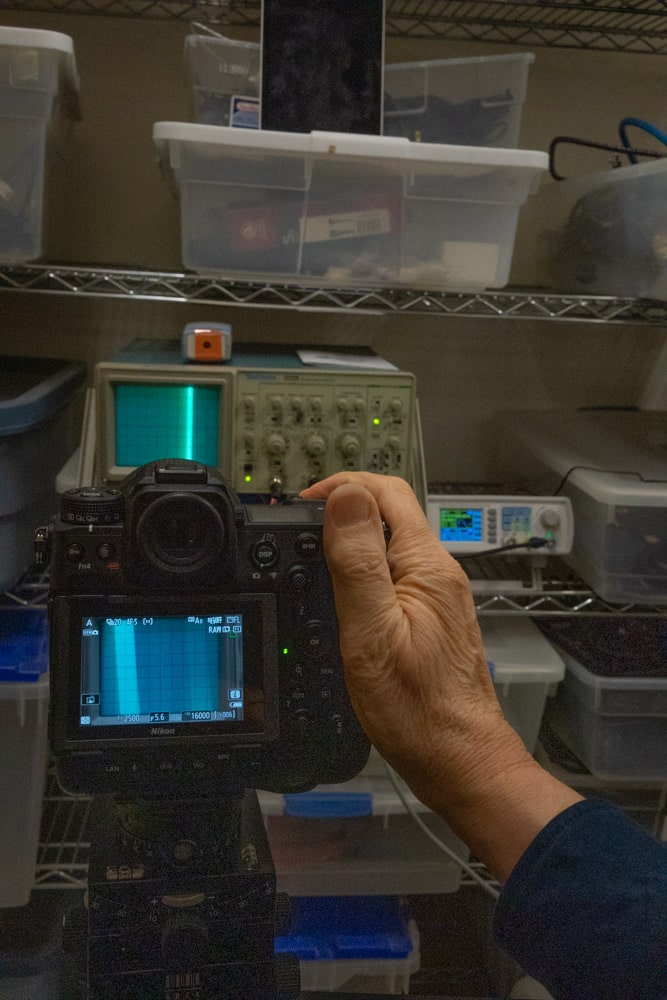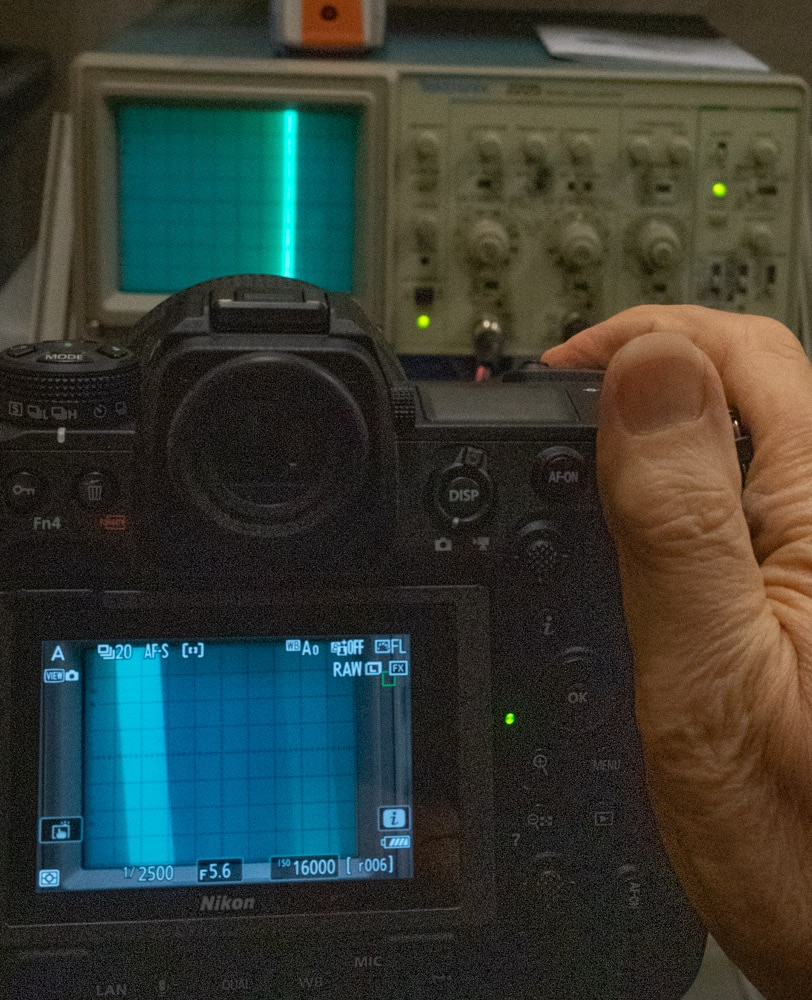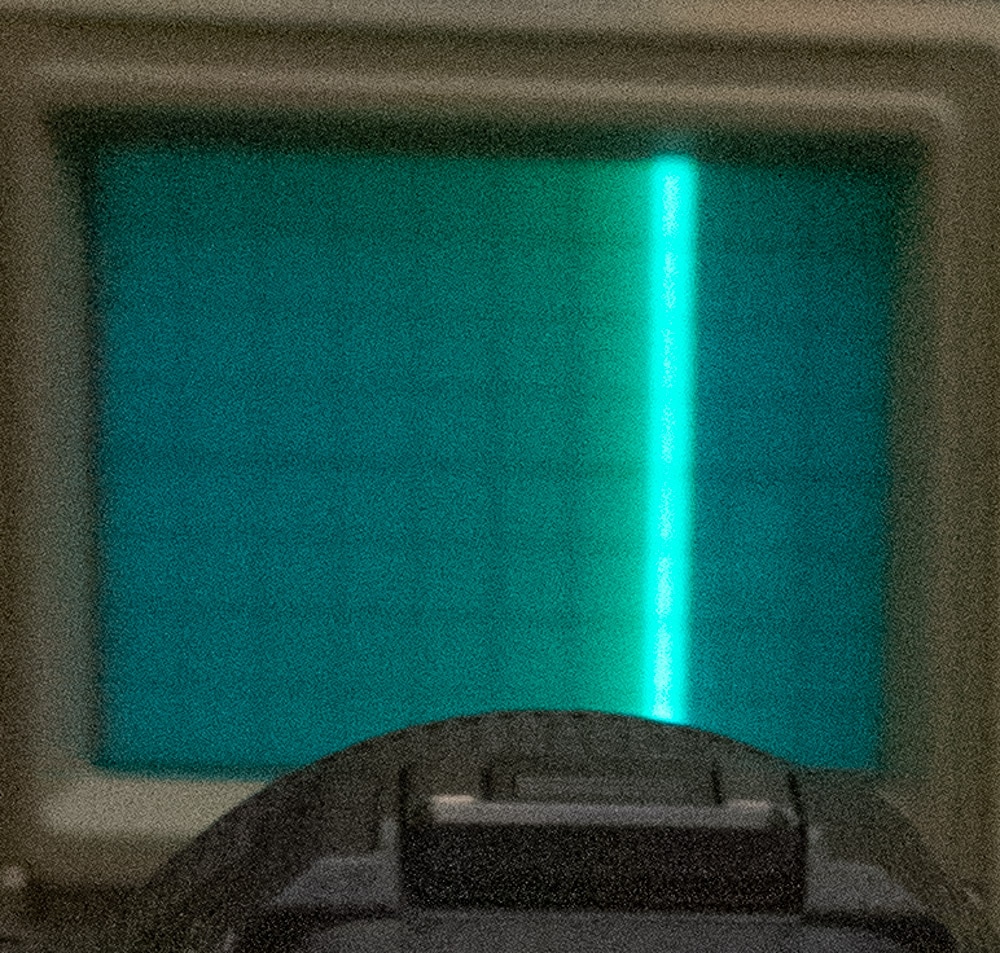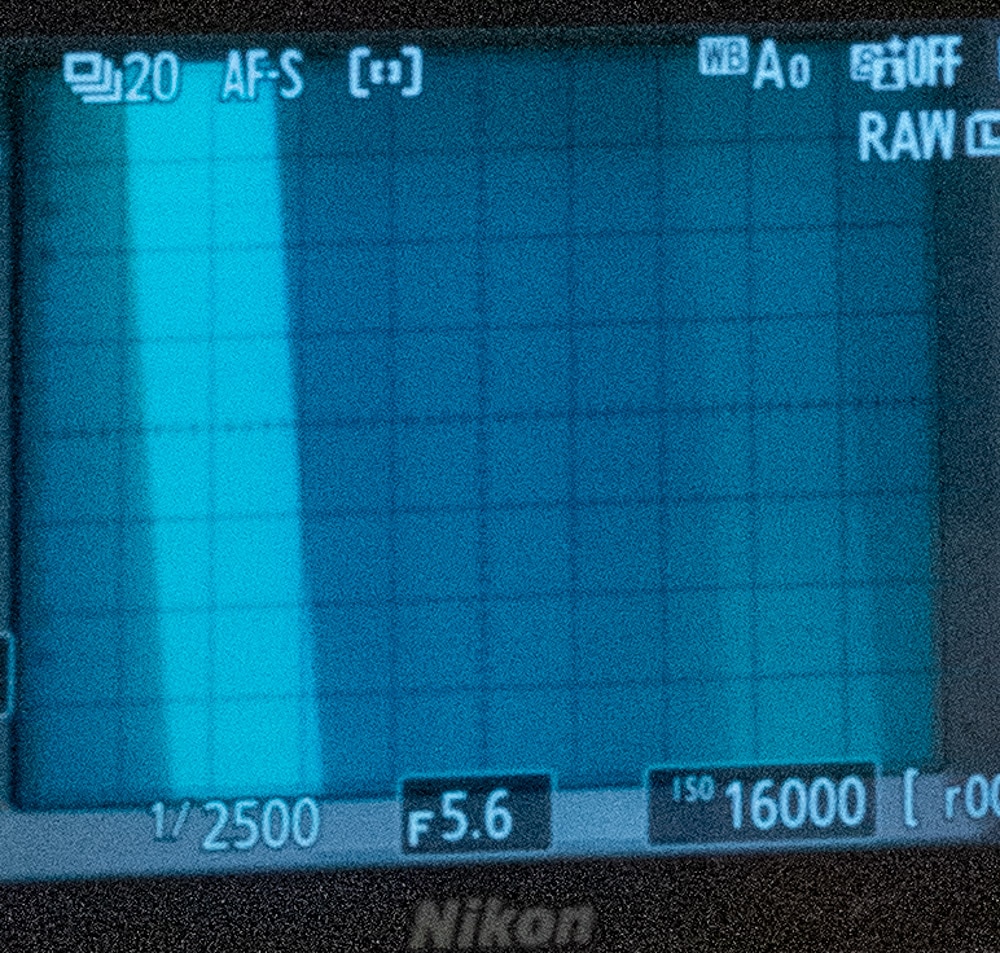This is one in a series of posts on the Nikon Z9. You should be able to find all the posts about that camera in the Category List on the right sidebar, below the Articles widget. There’s a drop-down menu there that you can use to get to all the posts in this series; just look for “Z9”.
In the previous post, I looked at the static latency of the LCD screen on the Z9, both with the shutter half pressed and not. In this post, I will examine the latency in continuous shooting at 20 fps. I set the shutter speed to 1/2500 to give the camera an opportunity to shine here.
Here’s the setup.
The camera is aimed at an oscilloscope with a 10 KHz full scale input wave, and the time base set to 5 msec/division. I photographed the LCD and the scope with a Sony a9 in portrait orientation (to prevent the Sony focal plane scan time from becoming an issue), with the mechanical shutter set to 1/500 second.
Here’s a crop of the above image:
Here’s just the scope shot directly:
And here’s the LCD on the Z9 from that same shot:
The distance from the right edge of the scope trace to the right edge of the LCD display is 4.5 divisions, or 22.5 milliseconds. The distance from the left edge of the scope trace to the left edge of the LCD display is 5.8 divisions a bit under 30 milliseconds. Call the average about 26 milliseconds. This is at least as fast as the static display, and like nothing I’ve ever seen in a MILC. Congratulations, Nikon!




How does the A9 compare?
The A9 display is one frame behind. But I should probably test that.
Some users have pointed out that when you zoom in (for verifying focus) that the EVF will introduce noticeable lag that isn’t seen in the zoomed out view. Can you run the same time under a magnified view?
I can send you the Youtube link of the reviewer that saw that issue if you cannot reproduce the display lag.
That was the way the Z7 worked. I’ll check it out. Thanks.